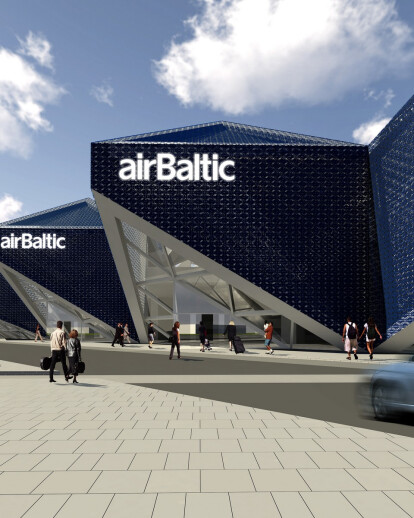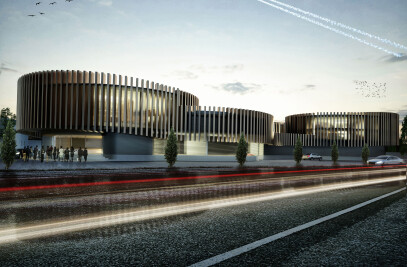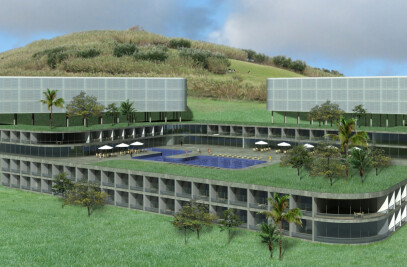This work opens our participation with ahad - architects, based in London, a studio which we now have a partnership.
Our scheme sets the terminal building in the middle of the two piers, demonstrating a strong connection with both of them. The continuous lan-guage of form, materials and expression shape both interior and exterior of the terminal. Further-more, the proposed design is intended to be read as one object; one entity where both piers play an inner complicity.
This reflects airBaltic's aspiration, reinforcing the idea of linking earth and sky, Eastern and Western Europe.
The building lies on a fixed grid generated from the geometries found in Latvia's culture. This grid defines spaces and passenger routes that inter-play between the main body of the terminal and both piers. The diamond like configuration and the diagonal grid are fundamental for the devel-opment of the terminal, where form is the result of the interior space obtained through a symbolic process. The studies of the intricate patterns re-sult in a strong geometry both in plan and eleva-tion as if the airport would take shape from the patterns and emerge itself as a large scale sculp-ture. Faithful to this idea, both interior and external cladding panels have been cut out with a distinc-tive pattern that allows the smooth light to flood the interior of the airport.
The main facade with the angular entrances has a dramatic effect, whether arriving or departing. It adopts a dynamic image, which reflects the true dynamism of flying.
The perforated panelled membrane is combined with the vibrant form generating light flooded and expressive volumes that make of this terminal a landmark building.
Our aim was to deliver an airport terminal that reflects the community's values, and exceed customer expectations. We believe that our design successfully combines airline aspirations, national charisma and its development, passenger flows and technical / operational requirements.

































